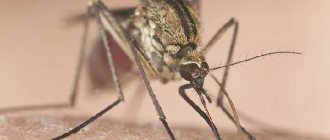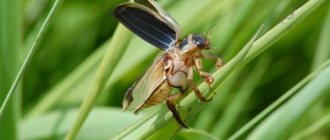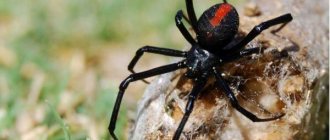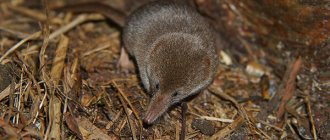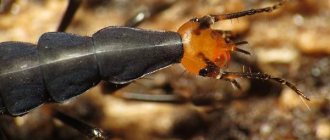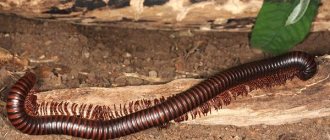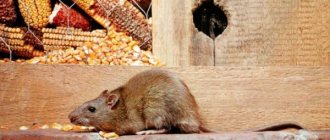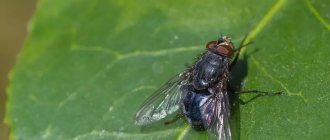The parasite (insect) is a beneficial parasite that monitors the number of pests in fields and gardens, preventing them from breeding in large numbers. The insect received this name because it lays eggs in the body of the victim, sitting astride it, while bending its elastic abdomen with the ovipositor well. The mechanism of nature for maintaining the numbers of many species of individuals is so intricate that it can be difficult for people to unravel it without harming themselves and the natural environment.
Insect riders: general information
The description of these parasites is quite interesting. The diversity of insect forms is combined with the abundance of their varieties. The largest species reaches 5 cm in length, and the smallest – up to 0.5 mm. Riders have long antennae, their bodies are very thin. They are often black with gold and red patterns. Most pests have colorless wings, but wingless specimens can also be found. Females carry an ovipositor on the back side, which can even exceed the length of their body.
Description and features
People for the most part do not like insects and treat them with arrogant disgust. Of course, compared to us, the highly developed inhabitants of the planet, at first glance they seem primitive, unpleasant, often annoying, and sometimes even downright disgusting. But still, the world of insects is a whole universe of amazing creatures worthy of the pen of a science fiction writer.
After all, each of these creatures has its own unique abilities. For example, the hero of our story, the insect rider, is endowed by nature with the interesting property of turning its own kind, that is, representatives of the class of insects and other arthropods, into real zombies. We have to find out how this happens and why riders need it.
Such creatures can be very small, barely noticeable, less than 1 mm in size. But there are also huge varieties in comparison with babies, reaching a length of up to 5 cm. In appearance, equestrians are very diverse. At a superficial glance at representatives of individual species, you can mistake them for ordinary beetles.
In fact, these are more likely wasps, and even look similar to them, but instead of a sting on the back, they have a very noticeable ovipositor, pointed at the end, often comparable in size, and sometimes even larger (in special cases 7.5 times ) of the insects themselves, but in some cases very tiny.
With the help of this organ, these creatures place eggs in the bodies of their victims, and only in this way are they able to exist, develop and continue their race. Ultimately, the life activity of equestrians most often turns out to be useful for humans.
Although, in fact, for arthropods they are very dangerous parasites, and therefore they are often called parasitic wasps. According to the systematization of living organisms, they belong to the stalked bellies. This order includes the same wasps, as well as bumblebees, bees, and ants. And therefore it turns out that these are the closest relatives of the riders.
The body of the described creatures is elongated in shape and is supported by six thin legs. These insects have a small head, equipped with long antennae extended forward like antennae.
These devices help them recognize their surroundings. The riders are hymenoptera , and therefore representatives of most species have membranous, elongated, transparent wings with a brown or grayish tint, mottled with veins. But there are also wingless varieties, which are very reminiscent of ants.
Other riders, due to the abundance of different colors inherent in them, are often confused with related bees, as well as with a number of other insects. Riders come in bright red, orange, spotted, and striped colors. But the most common body color is predominantly black, complemented by bright, different shades of transitions.
Mistaking ichneumon wasps for wasps, people are often frightened by their huge ovipositor, believing that it is a terrifying sting that is poisonous to humans. But this opinion is wrong. By the way, only females have this terrible organ, and the male half is naturally deprived of it, as well as, of course, the ability to lay eggs.
The process of laying eggs
Such parasites are treasure hunters by nature. Distinguished by their excellent sense of smell, they run along dried up tree posts and look for walled-up larvae of longhorned beetles and golden beetles under the bark. At times, riders (insects) fly around the trunk in a curve, looking for the place where a large beetle larva was buried under the bark. And it’s even difficult to imagine how they can feel the larva through such dense bark.
Having found an area, the parasite settles on the bark of a pine tree and begins to pierce it with its ovipositor. Therefore, in most ichneumon races the ovipositors are enormously long; in some species they are even 7.5 times longer than the body. This is a whole drilling device. At first, the insect removes the “case” in which its “installation” was stored to the side, then it stands “on tiptoe” and slowly screws a thin sting into the bark. Along with this, the parasite is forced to spin, screwing the ovipositor deeper.
The drilling operation sometimes lasts several hours. Thanks to its special structure, the thin ovipositor easily passes through the thick bark of a tree, piercing into a hidden prey larva at a depth of 2-3 cm. Then the egg passes through this ovipositor.
Habitat and lifestyle
Most species of ichneumon live in tropical climates. Only a few representatives are able to coexist in Russian latitudes: mimarommatids, mutilids, gallworms, chalcids, evanioid wasps, typhiids. Most often, the parasite can be found in places of high humidity: rivers, swamps, bets. In agriculture, proctotrupe parasites are used to control pests.
Long-tailed wasps are diurnal and at night they hide in the grass, under leaves and tree bark. They identify their prey by smell, sound and subtle vibrations in the air. The parasite is not aggressive, but during the breeding season it flies out to hunt.
This is interesting! Riders do not form nests and do not gather in one place as a whole family. After all, the female needs to constantly be in search of a potential victim and roam. The exception is pompilids (living in the USA), which settle in the ground near roads.
Types of riders (insects)
There are many varieties of such parasites: very small (less than 1 mm) and quite large (more than 2 cm). Some have an ovipositor several times wider than itself, while others have it tiny. There are individuals that destroy pest eggs, while other species parasitize living larvae, even overwintering in them. Some paralyze the victim before laying eggs, others do not.
Most adult insects feed on flower pollen (phacelia, dill), nectar, hemolymph of the victim, or sweet secretions of aphids. Many species do not feed at all, since they have formed eggs that only need to be laid. Of course, the female lays the eggs, and only she has the ovipositor.
The benefits of equestrians in agriculture
In different species of ichneumon ichneumon, the number of eggs can range from 15 to 15 thousand. Moreover, it is not at all necessary that the offspring of wasps that lay a small number of eggs will be small, since several thousand larvae can hatch from one egg.
All species of wasps are parasites. At the same time, they lay their eggs in the bodies of the victims so that the victim remains alive and the larva feeds on it during its development. At first, the larva eats only fat and does not touch vital organs, and then proceeds to the rest.
The riders are slowly but surely destroying their “living incubator”
Numerous crop pests mainly become victims of riders. In this regard, people have long bred equestrians to protect vegetable gardens and fields. Most often, the egg-eating parasites Trichogramma are used for these purposes, which infect the eggs of cabbage moths, codling moths and cotton bollworms.
If you find an error, please select a piece of text and press Ctrl+Enter.
Eulophus
Such a parasitic ichneumon is an external group insect of the winter moth caterpillars, some specimens of butterflies, the ancient moth, leaf rollers, cutworms, moth moths, fruit moths, and others. At different periods, the death of winter moth caterpillars was noted at 27-37% from this parasite.
The size of an adult eulophus is no more than 2 mm. His body is silver in color. The ichneumon pupae overwinter in groups near the remains of the larvae, on fallen leaves, and rarely in the surface layer of soil under wood.
Beneficial ichneumon insects fly out of cocoons after overwintering, in the second half of May, at the stage of mass flowering of cherries, pears, mid-season varieties of currants, apple trees, cherries and plums. The flight of the parasite lasts approximately 2 weeks and ends at the beginning of the summer season. Eulophus are fed with nectar from weeds and flowers of fruit crops in garden plots. Since the winter moth caterpillars are absent from the garden at this time, the insects look for the larvae of other pests (leaf rollers, cutworms) and infect them.
By August, the larvae of the new generation have already finished feeding, pupate, firmly attaching themselves to the leaf, and after leaf fall ends, they move to the winter hut in fallen leaves or make their way into the surface layer of the earth.
Harm and benefit
By attacking pests of trees and plants, riders provide significant assistance in their extermination. Some species of these beneficial insects are even protected by the state as valuable helpers. They control the number of harmful insects, thereby establishing balance in nature.
Thanks to the work and active participation of parasitic riders in the destruction of harmful insects, agricultural workers and ordinary plot owners can reduce the use of toxic substances and chemicals in their beds. This has a positive effect on the quality of the harvest and the environmental situation.
Often riders can be found in warehouses of grain and bulk products. There they look for their victims - barn worms and food moths. In rare cases, if they fail, they can lay eggs in food products, which will lead to damage to the goods and damage to humans. But, given the number of pests destroyed, minor sabotage on the part of the parasitic rider will not spoil its image in the eyes of people. Therefore, when you see these strange insects with a long sting-tail in your garden or garden, do not rush to destroy them.
Panisk
These are large parasitic insects. The riders look like huge red mosquitoes, they fly into the light of a lamp and are distinguished by short ovipositors. 40 species of nocturnal moths parasitize caterpillars, including winter worms and cutworms, which cause considerable damage to winter crop plantings. They attach 3 eggs to the back of the caterpillars, and the larvae soon hatch from them and press tightly against the pests until the period when they need to weave a pupa and pupate.
Reproduction and lifespan
Having reached adulthood, riders do not live long, usually no more than three months. And only in cases when, during the period of completion of formation, they are caught by cold weather, they go into forced wintering, and in the spring they complete their life cycle and die. In this case, their lifespan can be up to ten months. Each species approaches reproduction individually.
After mating, the female ephialtes ichneumon has to look for a suitable longhorned beetle larva in the bark of a tree. To do this, she runs along the trunk and taps everywhere with her antennae. Based on this sound, it detects the location of the object.
Next, she drills into the wood with her ovipositor, standing on her hind legs, spinning it like a top. This work lasts at least two hours. When it reaches the larva hidden in the trunk, the parasite places a single egg inside it.
The number of eggs of small species from the braconid family reaches 20 pieces. They paralyze the caterpillars, which are their main carriers, with poison. Not even a day passes after the attack before the larvae appear.
They complete all stages of formation in five days, and pupation lasts another four days. But developing rapidly, such creatures live extremely short lives: males - no more than 10 days, and the female half - only a month.
Large braconids can infect ladybugs by placing an egg inside. In this case, facial development occurs more slowly, sometimes more than three weeks. It feeds on the connective and fatty tissues of the cow.
And at a certain time it leaves the body, but not the victim. In this case, the larva gnaws the motor nerves and paralyzes the cow. Then a cocoon is formed under it. Thus, about a week passes in the pupal stage, and then the tormentor leaves forever for adulthood.
Rissa
This species of riders has a large ovipositor. They infect pests that feed on wood. The parasite is also common in Russian forests. The insect is black in color with yellow stripes on the abdomen and spots on the chest. They have a well-developed sense of smell, which helps them detect longhorned beetles and horntail beetles that live under the bark of a tree in a recess of several centimeters. The ichneumon ichneumon (insect) drills a hole in the bark for a long time. Risses lay eggs directly into the passage eaten by the horntail larva. The larvae of these beneficial parasites first feed on the host's hemolymph and then consume internal organs.
EntomophagesInsects and mites that feed on other insects and mites, mainly plant pests, are classified as entomophages and acarifages, among which there are parasites and predators. They actively seek out hosts or victims and infect or eat them. As a rule, entomophages with highly developed search abilities are the most effective.
Entomophagous parasites are extremely diverse in external characteristics, but what they have in common is that their larvae live for a long time at the expense of the internal organs of the host individual. Adult insects have wings and lead a free lifestyle, often feeding on the nectar of flowers, as well as the hemolymph of insects, which the females obtain by piercing the body of the pest with the ovipositor.
According to the method of attack and type of host, insect parasites are divided into endoparasites (internal), which develop inside the host’s body, and ectoparasites, which develop on the host’s body. Most parasites (order Hymenoptera) are Endoparasites . Females lay eggs either in any part of the host’s body or in
three certain organs. In this case, eggs, larvae, pupae or adult insects can become infected. If the parasites develop in the host's egg, they are called true egg parasites, or ovi eaters. As a rule, these are representatives of the superfamily Chalcidoidea. Among them are species of the genus Trichogramma, which develop in the eggs of many pests of fruit, vegetable crops, potatoes and other plants, a parasite of the eggs of the ringed silkworm Telenomus laevigatus R.
Among Hymenoptera insects there are ovilar parasites. They lay eggs in the host's egg, but the parasite larva completes its development in the larva, and sometimes in the pupa of the host. These include, for example, Ageniaspis fuscicollis Dalm., which lays an egg in the developing embryo of the apple moth egg.
Parasitic larvae lay eggs or larvae inside the host larvae and complete their development there. Most representatives of this group belong to the Hymenoptera insects, and some of them belong to the order Diptera. Such parasites are, for example, the Blondelia fly and the Diadegma parasite. The females of these entomophages lay one egg each in the caterpillars of apple or cabbage moths, apple moths, leaf rollers, etc. The larva develops inside the host's body.
Larval-pupal parasites lay eggs in insect larvae. The hatched parasite larva completes development in the host pupa. In this way, the larvae of the parasitic Ichneumonidae, some representatives of the superfamily Chalcidoidea, develop. Representatives of this group include, in particular, Pimpla turionella Z. (examinator F.) - a common inhabitant of gardens and vegetable fields, parasitizing the caterpillars and pupae of apple moths, moths, ringed silkworms, hawthorns, codling moths, and cutworms.
Many parasites infect adult insects. Mainly beetles, bedbugs and ants are attacked. Thus, Perilitus rutilus Nees infects weevils of the genus Sitona, and Microctonus vittatae Mues infects adult leaf beetles. In this case, the egg is laid into the body of the beetle through a soft membrane.
Ectoparasites lay eggs or larvae on the body of the host, having previously paralyzed it, or on a food plant near the host. They are found among the families of Hymenoptera and Diptera insects.
External egg parasites lay eggs near the host's egg clutch. The hatched larva feeds on eggs, being, as it were, an egg predator. These include, for example, parasites that destroy eggs in locust capsules.
Ectoparasites from the order Hymenoptera infect secretive pests. Thus, Macrocentrus marginator Nees infects currant glassworm caterpillars that feed on the pith of currant and gooseberry stems, and during the period of its development almost completely destroys the host.
Ectoparasites that infect open-living insects are less common. The egg or larva is laid on the host's body or partially inserted into the puncture made by the parasite.
Among parasitic dipterans, there are species that lay eggs on food plants. The pest caterpillar swallows them along with food. The parasite larva hatching in the intestine penetrates the body cavity of the host and feeds on its contents. In a number of species, parasite eggs laid on food plants contain fully formed larvae. After hatching, the parasite larva, upon meeting the host, attaches to it and penetrates its body. This type of host infection is observed in tachine flies and sarcophagine flies.
There are single and group parasites. For example, in the caterpillar of the apple moth, only one larva of the ichneumon moth Diadegma armillata Grav develops. Several larvae of the chalcid Eulophus larvarum Z develop due to the winter moth caterpillar.
Depending on the range of hosts selected for infection, parasitic insects are divided into monophages (specific), infecting insects of one species or related species of the same genus, and polyphages, infecting several species of insects. Thus, Ageniaspis fuscicollis Dalm is a specialized parasite of moths of the genus Hyponomeuta. The parasite Pimpla turionella is a polyphage and infects the caterpillars of many species of Lepidoptera. Among polyphages, however, there are species that prefer one host or another. Thus, the parasite Apanteles glomeratus L., being a polyphage, prefers cabbage whites to infect caterpillars.
As a rule, the development periods of the parasite and the host coincide. If the parasite develops at the expense of a phytophagous insect, then it is called primary. If it infects the primary parasite, it is called secondary. Parasites above the second level are classified as superparasites. In the literature, however, secondary parasites are often called superparasites.
Entomophagous hshtsniks. Predators include entomophages, the larvae and adults of which feed on more than one prey individual. These are representatives of various orders of insects and mites. Among them, specialized predators and polyphages are distinguished. For example, the rhodolia ladybird chooses only the Australian grooved mealybug for food. Predatory bugs - anthocoris (Anthocoris nemorum L.), mirids (Campylomma verbasci M.-D., Pilophorus perplexus Dgl. Sc.), widespread in gardens and fields, are polyphagous, feeding on tick eggs, eggs and caterpillars younger instars of leaf rollers, codling moths, leafminers, currant gall midge larvae. The larvae of syrphid flies and the larvae and adults of aphid beetles destroy mainly aphids and copperheads. Predatory phytoseiid mites feed on eggs of fruit mites and apple scale insects. Predatory ground beetles destroy soil-dwelling pests of field, vegetable, berry and other crops. Lacewing larvae (order Lacewings) lead a predatory lifestyle, eating the eggs and larvae of Lepidoptera, aphids, copperheads and other insects.
Adult predators, as a rule, feed on the same pests as their larvae (for example, coccinellids, predatory bugs and mites), or lead a free lifestyle, feeding on flower nectar, honeydew (hover flies, lacewings).
Aphelinus, aphidiid, aphidius
They are small parasitic parasites mainly on aphids. When an insect detects an aphid, it tucks its abdomen between its legs, quickly pierces it with its ovipositor and jumps away so that it does not spray it with the protective secretions of its tubes. Aphelinus lay only 1 egg in aphids. Their larvae form in it, and over time it turns into a mummy.
Ageniaspis
Considered one of the original designs. The parasite (insect) specializes in infecting the apple moth egg, however, it does not mature for a long time, but waits for the caterpillar itself to develop. Then from this egg many twins appear. From the eaten larvae, 150-200 ageniaspis are hatched.
The record holder for fertility is plastigaster. It mainly parasitizes the Hessian grain fly. The female infects both young larvae and eggs, laying up to 3000 eggs during her life.
No less popular is encarsia, which lays its eggs on the larvae of the greenhouse whitefly. Almost all greenhouse agricultural companies propagate it.
Wasp wasp: is the adult dangerous?
An important question that interests people: “Does the ichneumon wasp cause harm or benefit to agriculture, and is it dangerous to humans?” A short answer can be presented in the form of the following theses:
- the insect is dangerous only for sensitive people with a high probability of an allergic reaction;
- the ichneumon wasp contributes to the destruction of garden and agricultural pests;
- the number of adults in the apiary should be limited, as they destroy bees.
All representatives of wasps bite painfully, but the species in question never attacks a person. The rider is not characterized by aggressive behavior; she always tries to avoid contact with people and disappear from their field of vision.
If the black wasp was forced to attack a person, it stings, squirting out a dose of poisonous substance. The bite feels like an ant's. Don't worry about the consequences. Adults do not use the human body to lay eggs. The ichneumon wasp may only pose a danger to sensitive people with a high likelihood of developing an allergic reaction. At the site of the bite, they develop a large red spot and swelling. In severe cases, there is a rash on the body and deterioration in health.
It is worth mentioning separately the role of the wasp for agricultural and garden crops. Adults often choose plant pests as victims. Therefore, their presence in the garden will only be beneficial. But their presence in the apiary should be limited; adults cause significant harm to bees.
What do beneficial parasites usually eat?
Most species of such insects do not eat meat. The adult rider (insect) eats the nectar of flowers and hunts to continue its lineage. There are mature individuals that do not feed on anything at all. However, parasites are very fond of drinking, gathering near lakes and feasting on dew. They exist for no more than 2 months, some of them are evening or nocturnal insects. But at the same time, the favorite and main food of riders are:
- mealybugs;
- cicadas;
- sawflies;
- scale insects;
- aphid;
- bedbugs;
- pest butterflies;
- flies;
- whiteflies;
- burners;
- beetles;
- blood aphid.
Many will be interested to hear the answer to the question: “Is the insect rider dangerous for humans?” Absolutely not, and on the contrary, these parasites play an important role in nature, protecting garden plots with fruit trees and vegetables from the invasion of various pests.
Nutrition
Adult megarhyssa perlata, which prefer to consume the nectar of flowers themselves, introduce their larvae into pests that breed in the bark of trees, depositing them in the passages made by these insects.
And ichneumon larvae , being extremely active in search of food, find their own prey, attaching themselves to the body of the victim. Most adult parasites do not eat the flesh of other insects, and some do not even eat anything at all. But they are looking for a suitable object to saturate their larvae.
Prey for parasites can include wasps, ants, beetles and caterpillars, and in some cases scorpions and spiders. Braconids are used to feed barn moths and leaf roller butterflies, but they can also harm people’s supplies, spoiling spices, confectionery, dried fruits, grain and flour.
